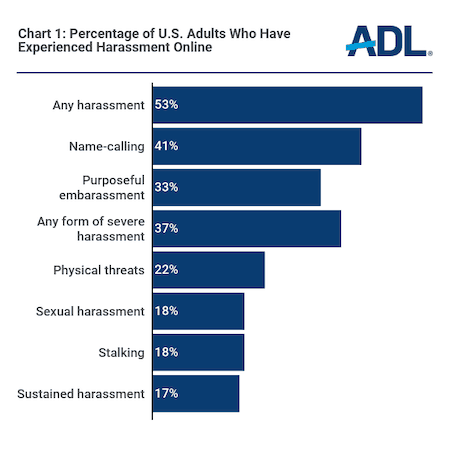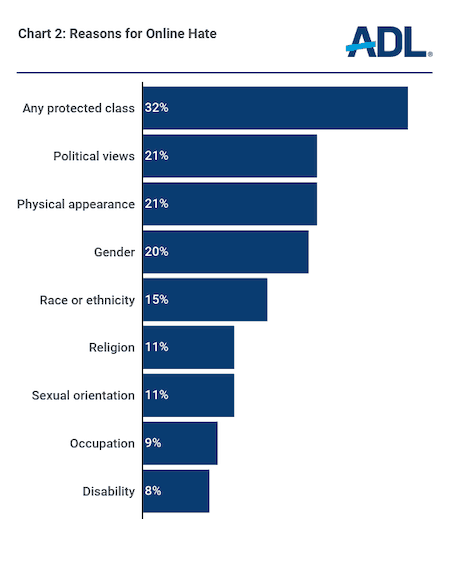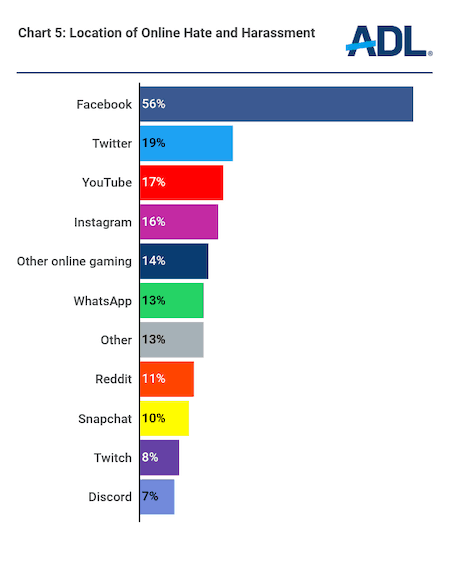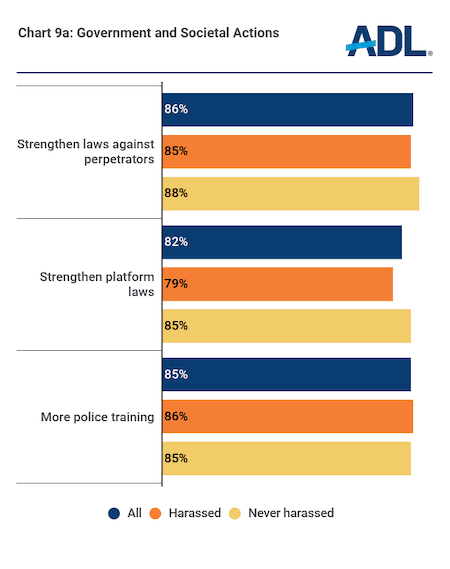Online Harassment Study 2018
Over 55 percent of online harassment happens on Facebook
ADL’s online harassment research 2018 was done to see how online harassment was changing with time, how people experience online assault and to compare different tech platforms where the abuse takes place.
“Online harassment is not a tiny thing that happens to a small number of people, but is actually something that’s happening to a lot of people”
Adam Neufeld, Vice President of Innovation and Strategy at ADL
The study says 37 percent of Americans faced ‘severe’ online harassment in 2018. This includes online sexual harassment, stalking, physical threats, and continued harassment.


Platforms where online harassment takes place
The biggest platform for this offensive behavior in terms of volume was Facebook.

How do people react to online harassment
Around one-third (32 percent) of Americans who have been harassed reported that the harassment stemmed from their gender identity, sexual orientation, race or ethnicity, religion, or disability.
Faced with online assault
- 38 percent of people adjust their own behavior. They withdraw from the platforms; leaving them altogether or posting less.
- 18 percent asked the tech companies to intervene
- 6 percent of people went to the police.
What should be done about online harassment laws
The nature of this online abuse may be different by person, but the respondents were quite unified in their opinion on what should be done about online harassment laws. About 80 percent of them said they supported laws that protect people from online abuse and wanted tech companies to take more action to prevent it. Such as introducing keyword filters to weed out hateful content.

What can be done to prevent harassment while online
Know that online bullying is a sign of weakness for the perpetrator. As upsetting as it can be, it’s extremely important that you DO NOT respond to this person. Engaging with the bully often only makes matters worse. Bullies and psychopaths feed off their victim’s misery and pain.
- Maintain sufficient identity theft protection on your devices.
- To prevent phishing scams, use a secured network, remove any suspicious emails and only send sensitive information through encrypted emails. We recommend Protonmail.
- Document everything. Retain evidence of the online harassment by taking screenshots or printing them. You may need proof later for law enforcement or for a lawsuit. What begins as moderate harassment can escalate, and if it does, you have to have copies of the harassing and malicious comments. Contact your local law enforcement. If you are underage, show the posts to your parents. Report the bullying to the platform provider and flag the harassing comments.
We can help with reporting harassment online. We have experience with stopping harassment on almost all social platforms. You can see some of our online harassment cases here.
If you need to identify your bully, our cyber investigators can assist. They identify anonymous antagonist so you can ask them to stop or take them to court.
Restraining order for online harassment
Are you being harassed online? If so, you may want to consider obtaining a restraining order against online harassment and stalking. Obtaining a restraining order can be difficult if the online harassment is being posted under the cloak of anonymity. But, our team of licensed private investigators and lawyers can give you a little guidance on the relief that might be available.
 Page1.me
Page1.me